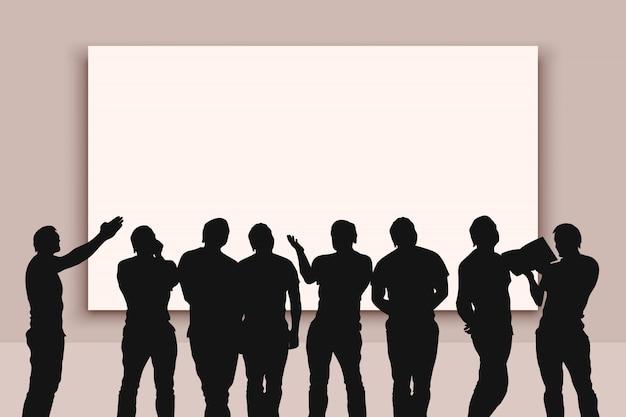Have you ever noticed that sometimes words alone are not enough for effective communication? That’s where paralinguistic features come into play. In this blog post, we will explore the fascinating world of paralinguistic features and their role in communication.
From the tone of voice to facial expressions, body language to personal space, paralinguistic features encompass all the non-verbal cues that enhance, emphasize, or even contradict the words we use. They add depth and nuance to our interactions, speaking volumes without saying a single word.
Understanding and utilizing paralinguistic features is crucial for building stronger connections, promoting effective communication, and avoiding misunderstandings. So, let’s dive in and uncover the secrets of this hidden language that shapes our everyday interactions.

What are Paralinguistic Features?
Paralinguistic features, my friend, are like the spice in our speech stew. They’re the sneaky little extras that can make all the difference in how our words are received. You know, like adding a pinch of salt to your dish—it just takes it to a whole new level. In the world of language, paralinguistic features are the added seasonings that give your words flavor, style, and personality.
Tones: The Symphony of Sound
Ah, tones—the melodious symphony of pitch variations that bring our words to life. Think of it like a saxophone solo in a jazz band. When we speak, we don’t just use one monotonous tone; we dance through a range of pitches, giving our sentences a musical quality. We can go high, low, rise, or fall, and each tone paints a different emotional picture. So, next time you’re chatting away, remember to hit those high notes and low notes like a vocal virtuoso!
Tempo: Speedy Gonzales or Sloth-like
Are you a smooth talker, or do you prefer to take it slow? Well, my friend, that’s all about tempo. Tempo is to speech what caffeine is to your morning routine—it sets the pace. Some people rattle off words like a runaway train, while others savor each syllable like a languid sloth taking a stroll. So, whether you’re a high-speed chatterbox or a laid-back linguist, embrace your tempo and let it add a dash of character to your conversations.
Volume: The Power of Soft and Loud
Shhhh! Did you hear that whisper? Or that earth-shattering scream? That’s the magic of volume, my friend. It’s the knob we control to turn up or down the impact of our words. Sometimes a gentle murmur can convey intimacy or secrecy, while a booming voice can command attention (and possibly frighten the neighbors). So, next time you’re talking, remember to wield the power of volume like a wizard casting a spell. Just be mindful of your surroundings—no need to rattle windows with every word.
Voice Quality: The “Je Ne Sais Quoi” of Speech
You know that person whose voice is so mesmerizing, you hang on their every word? Well, my friend, that’s voice quality working its magic. It’s the je ne sais quoi of speech—the undefinable essence that sets one voice apart from another. Some voices are smooth as silk, while others have a gravelly charm. Whether you sound like a sophisticated opera singer or a grizzled cowboy, embrace your unique voice quality, because it adds that extra oomph to your communications.
Nonverbal Cues: The Ultimate Expressive Dance
Imagine you’re at a party, and someone does a wild interpretive dance to express their feelings. That’s what nonverbal cues are like, but for speech! These cues include gestures, facial expressions, eye contact, and body movements that complement our words. They’re like the backup dancers that elevate a performance from average to extraordinary. So, next time you’re talking, let your body do the talking too! Give those jazz hands a moment to shine and watch as your words come alive.
Now you know, my friend, that paralinguistic features are the secret sauce that brings our words to life. Tones, tempo, volume, voice quality, and nonverbal cues create a delightful symphony of communication. So embrace these vibrant elements and let your speech shine like a disco ball at a 70s party. Your words will dance, dazzle, and leave a memorable impression on anyone who has the pleasure of listening.

FAQs About Paralinguistic Features
Which of the following is an example of a non-verbal message
Non-verbal messages can take various forms, but a classic example is using facial expressions to convey emotions. Imagine someone giving you a warm smile or a raised eyebrow that says, “I’m not buying it.” These non-verbal cues speak volumes without a single word being uttered.
Which of the following is an example of verbal communication
Verbal communication involves the use of words, so any conversation or exchange where information is conveyed through spoken language falls into this category. From impromptu speeches to a casual chat with friends, your witty remarks or inspiring monologues are all prime examples of verbal communication.
What are the 8 nonverbal codes
Nonverbal communication is a rich tapestry of signals beyond just words. The 8 nonverbal codes include:
- Facial expressions: The ever-changing landscape of our eyebrows, eyes, and mouth.
- Gestures: Those enthusiastic hand movements that spice up our conversations.
- Posture: The way we hold ourselves that can reveal our confidence or lack thereof.
- Proxemics: How we use and interpret personal space during interactions.
- Eye contact: The windows to the soul can express interest, sincerity, or even discomfort.
- Paralanguage: The way we speak, incorporating tone, pitch, volume, and pace.
- Clothing and appearance: The fashion choices we make that send signals about our identity and personality.
- Touch: The power of a gentle pat or a firm handshake, conveying various emotions.
What is the importance of Paralanguage
Paralanguage, the nuances of speech beyond the actual words, plays a crucial role in communication. It adds depth and meaning to conversations, helping to convey emotions, attitudes, and intentions. Whether it’s the subtle sarcasm in a friend’s voice or the excitement in a teacher’s tone, paralanguage enriches our understanding of spoken language.
Why is Proxemics important to communication
Proxemics, the study of personal space and territoriality, significantly impacts communication. The distance we keep between ourselves and others can affect the level of comfort, intimacy, or authority in a given interaction. Understanding proxemics helps navigate social situations and respect cultural norms regarding personal space.
How many types of Paralanguage are there
Paralanguage encompasses an array of vocal aspects that complement verbal communication. There are five main types of paralanguage, including:
- Tone: The emotional quality or attitude expressed through speech.
- Pitch: The highness or lowness of your voice, varying between individuals.
- Volume: The loudness or softness of your voice, which can evoke different reactions.
- Pace: The speed at which you speak, influencing the overall mood of the conversation.
- Rhythm: The pattern and flow of speech, adding a musical quality to your words.
What are the paralinguistic features
Paralinguistic features refer to the elements of speech beyond the words themselves. These include tone, pitch, volume, pace, rhythm, and other vocal cues that convey information about a speaker’s attitude, emotion, and intent. Understanding these features enhances our ability to interpret and respond effectively to verbal communication.
What are Paralinguistic cues
Paralinguistic cues are the observable characteristics of speech that provide valuable insight into a speaker’s thoughts and feelings. These cues go beyond the actual words used and encompass elements such as intonation, emphasis, pauses, and even vocal quality. Paying attention to these cues can help decipher hidden meanings and enhance communication comprehension.
Remember, effective communication goes beyond words alone. Nonverbal cues and paralinguistic features add flair to our interactions, enabling us to connect, understand, and convey our messages more authentically. So, embrace the power of these subtle but mighty elements, and let your words dance with emotions!
